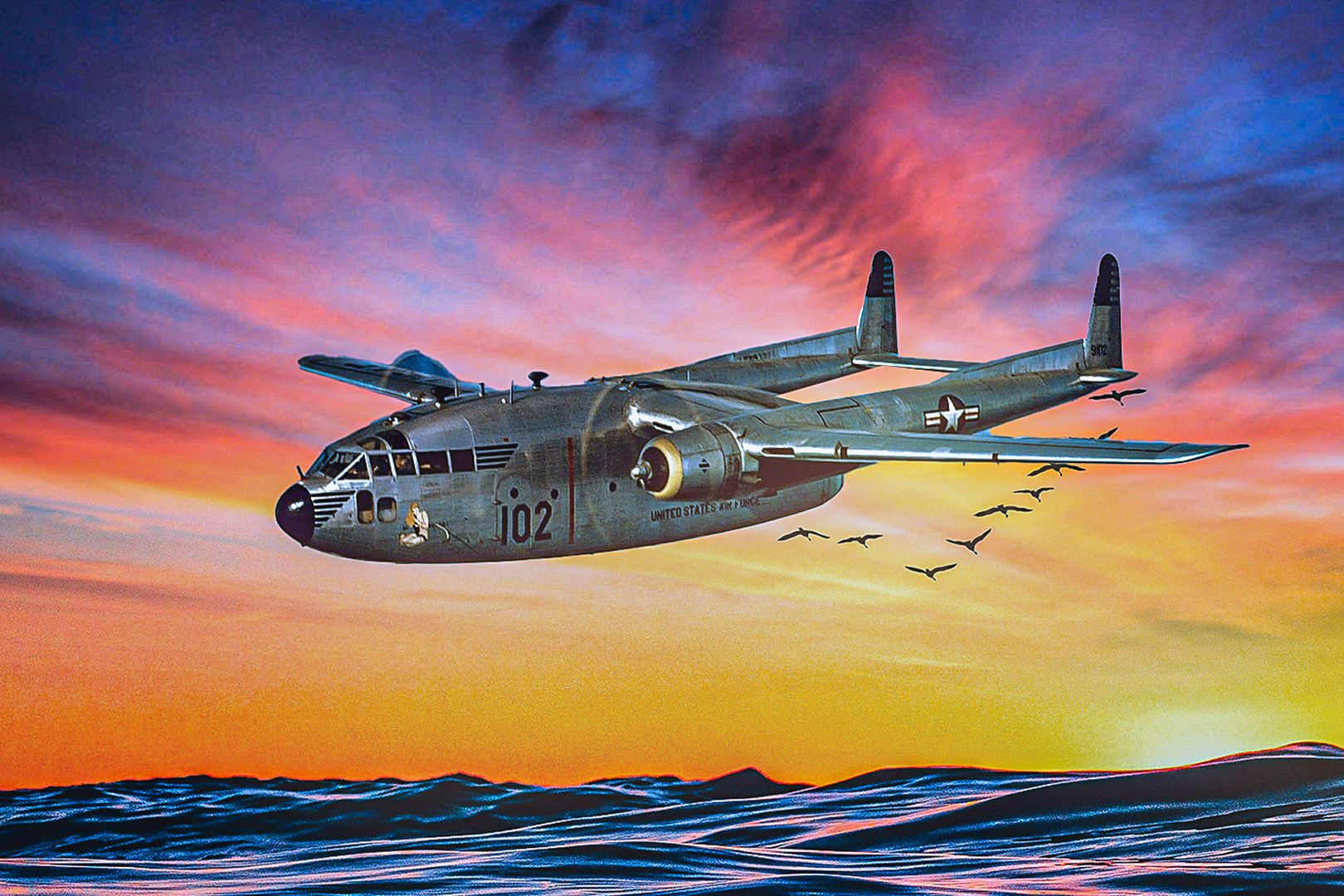Summary In August 1960, a Flying Boxcar made the first mid-air recovery of an object returning from space. During the Korean War, a C-119 airdropped bridge sections, saving numerous troops. 52 C-119G Flying Boxcars were converted to gunships in Vietnam and used for close air support.
The Fairchild C-119 Flying Boxcar was an early post-war military transport (first flown in 1947) and was flown by the US Air Force, US Navy, and Marine Corps. It was developed from the World War II Fairchild C-82 Packet and was built to carry cargo, litter patients, personnel, and equipment. It could also drop cargo and troops by parachute.
It remained in production until 1955, at which time some 1,100 had been built. 1 Mid-air satellite recovery A Flying Boxcar snagged the Discoverer 14 satellite at 8,000 feet Date: August 1960 EC-119J: Satellite tracking variant First snag altitude: 8,000 feet According to the National Museum of the US Air Force , the C-119J Flying Boxcar (specifically the one on display at the museum) made the world's "first mid-air recovery of an object returning from space." The event occurred in August 1960 when the Flying Boxcar caught the Discoverer XIV satellite using a recovery gear lowered from the open rear door.
The recovery gear snagged the satellite's parachute, and it was then able to slowly winch the satellite with its reeled film onboard. As this was a time long before digital cameras and live feeds, satellites (and all cameras) had to take footage on film reels.


















